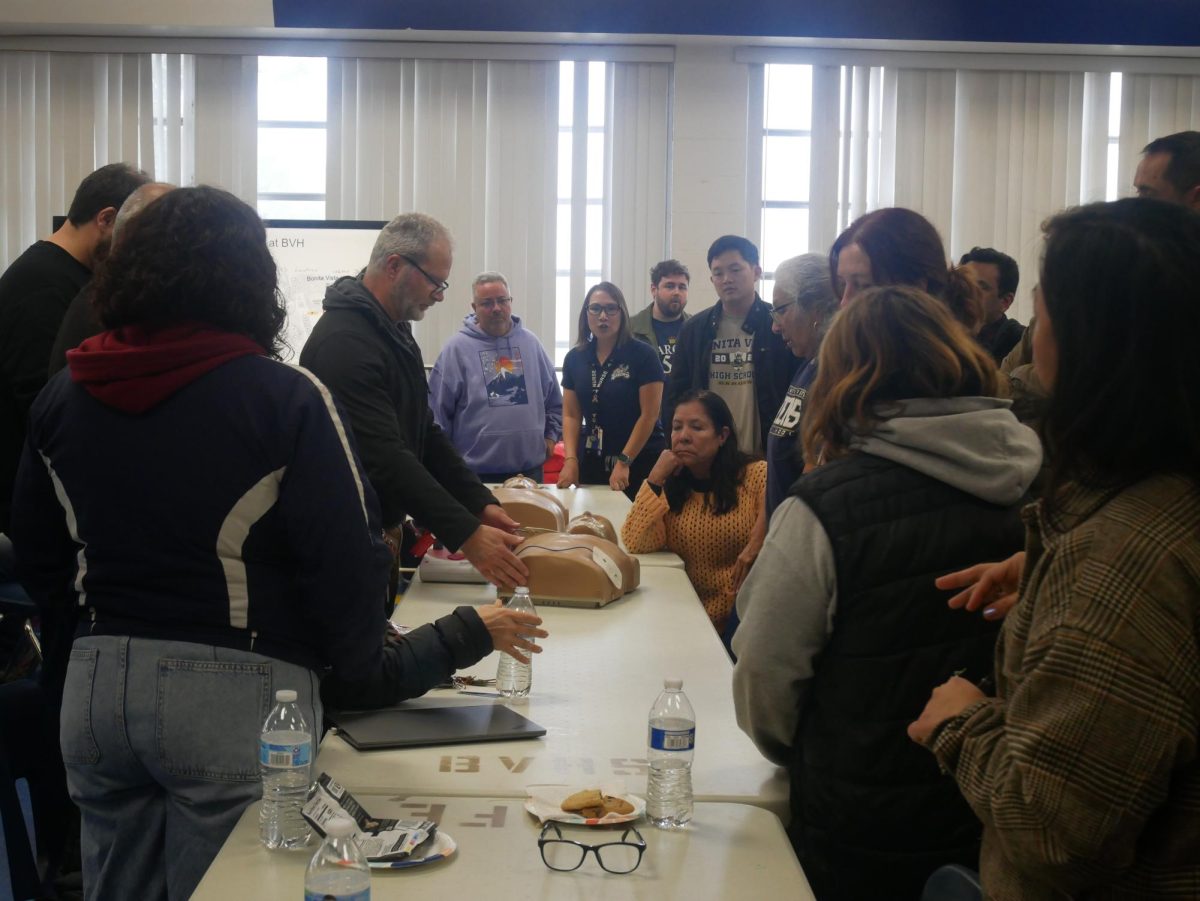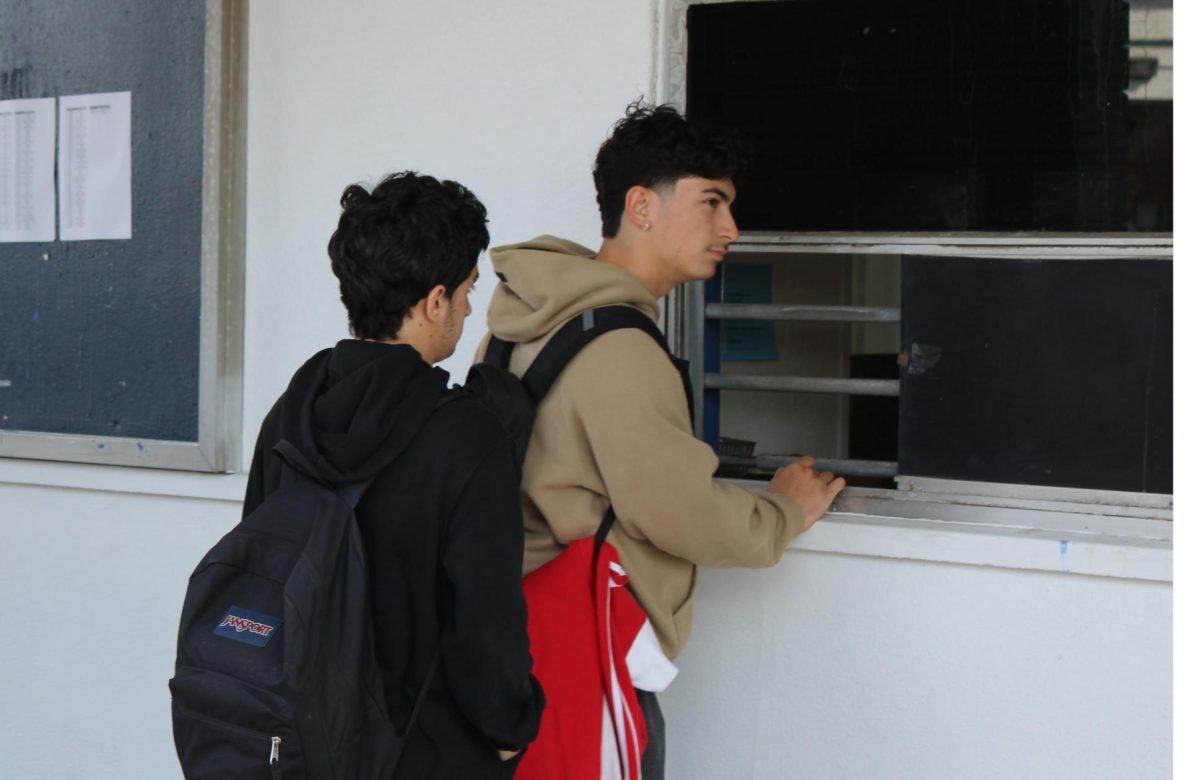Throughout the month of July, the Sweetwater Union High School District worked to revise the previously mandatory Preliminary Scholastic Aptitude Test (PSAT) to be optional for Bonita Vista High (BVH) students. This decision was the result of several colleges becoming “test-blind,” meaning that they no longer consider Scholastic Aptitude Test (SAT)’s scores when viewing admissions. Many renowned schools have taken this initiative including all California State Universities (CSUs) and Universities of California (UCs).
Despite many colleges not mandating SAT scores, the PSAT is still offered for numerous purposes. Of the two purposes, one is gauging a student’s standpoint to prepare for the official SAT. BVH International Baccalaureate (IB) coordinator Jared Phelps, provides his unique perspective on both the SAT and the PSAT. The vast majority of students do not take the SAT and as a result, Phelps agrees with the decision of making the PSAT optional to an extent.
“In the 2022-2023 school year we only had 50 seniors take the SAT. When they were juniors, all of [the] seniors probably took the PSAT. This means that we made 550 students take the PSAT so that 50 of them would get a practice score,” Phelps said.
The PSAT day was moved to a Saturday and will cause a shift in the typical “future vision day” that BVH annually hosts during a school day. However, with the new implication the exams are moved to a Saturday to assist in emulating the environment a real SAT test is taken in. IB diploma candidate and junior Toya Luna explains why they support the SUHSD being scheduled outside of a school day.
“I usually have stuff going on, on Saturdays, but it makes sense because it’s the way that [the] real SAT would be taken. Moving [exam dates] helps us be more prepared for the actual SAT, [and] I think it was a good decision,” Luna said.
Similarly to Luna, Phelps acknowledges how the PSAT’s date has several benefits. Despite these benefits, Phelps also notes the possible pitfalls of moving the exams on a Saturday as it creates one more hoop for students to jump through to attain the score they want. Biology and Forensic science teacher, Joseph Szakovits, debunks the myth that SATs level the playing field of college admissions.
“People think of [the SAT] as an equalizer but what it really does is expose inequality more than anything else. The people who do well on it are the people who have the resources to prepare for it, who have parents who have the time and the money to support them on it. And that’s without even getting into any biases that the test may have written into it,” Szakovits said.
Phelps recognized the evolving trend in which schools and higher education systems have begun to outgrow these standardized exams. He further explains why colleges used the SATs at first and why they are no longer requiring them.
“There is data that shows that scores that students have gotten on [the] SATs are not as predictive of how they’ll do in college as things like Grade Point Average, letters of recommendation or the rigor in classwork,” Phelps said. “The pandemic is also playing a role in this, when students of the class of 2021 were basically not able to take [the] SATs, colleges were sort of forced to say, ‘If you don’t have an SAT score, it’s okay.’”
Phelps continues to describe the PSAT’s purpose outside of preparing students to take the SAT. Furthermore, the PSAT serves as a possible qualification for the National Merit Scholarship.
“The National Merit program is a program that gets students access to amazing scholarships, but it’s incredibly hard to get in. You have to be in the top 10th of a percent of students nationwide in order to get these scholarships. […] If you are good at those kinds [standardized tests], great, you should take the test on Saturday because you might be eligible,” Phelps said.
Luna is one of the many students on campus that prides themselves in their ability to perform when it comes to standardized testing, resulting in their decision to take the PSAT. Luna further explains that the score would be added to her application even if it’s not required.
“If I do really well on the PSAT, then I could have a chance to get [the NMSQT]. If I do well on the SAT, then maybe I could have a higher chance of getting into a good college. I think I can score well on [the SAT] because I typically score high on standardized tests,” Luna said.
Phelps presented to all junior classrooms and explained the reasons why they should and shouldn’t take the PSAT depending on their circumstances and goals. He did this with the intent of supporting students in making an informed decision on whether or not to take the PSAT.
Both Phelps and Szakovits greatly emphasized the importance of both the SATs and PSATs previously being considered a level playing field for students to showcase their knowledge. They both vividly discussed the process of preparing and taking the test as well as how the test itself may not be an equal opportunity for all students.
“If the SAT does have value limiting factors on students promote the idea that optional is not equitable. Each student has different circumstances that allow for different liberties,” Phelps said.







